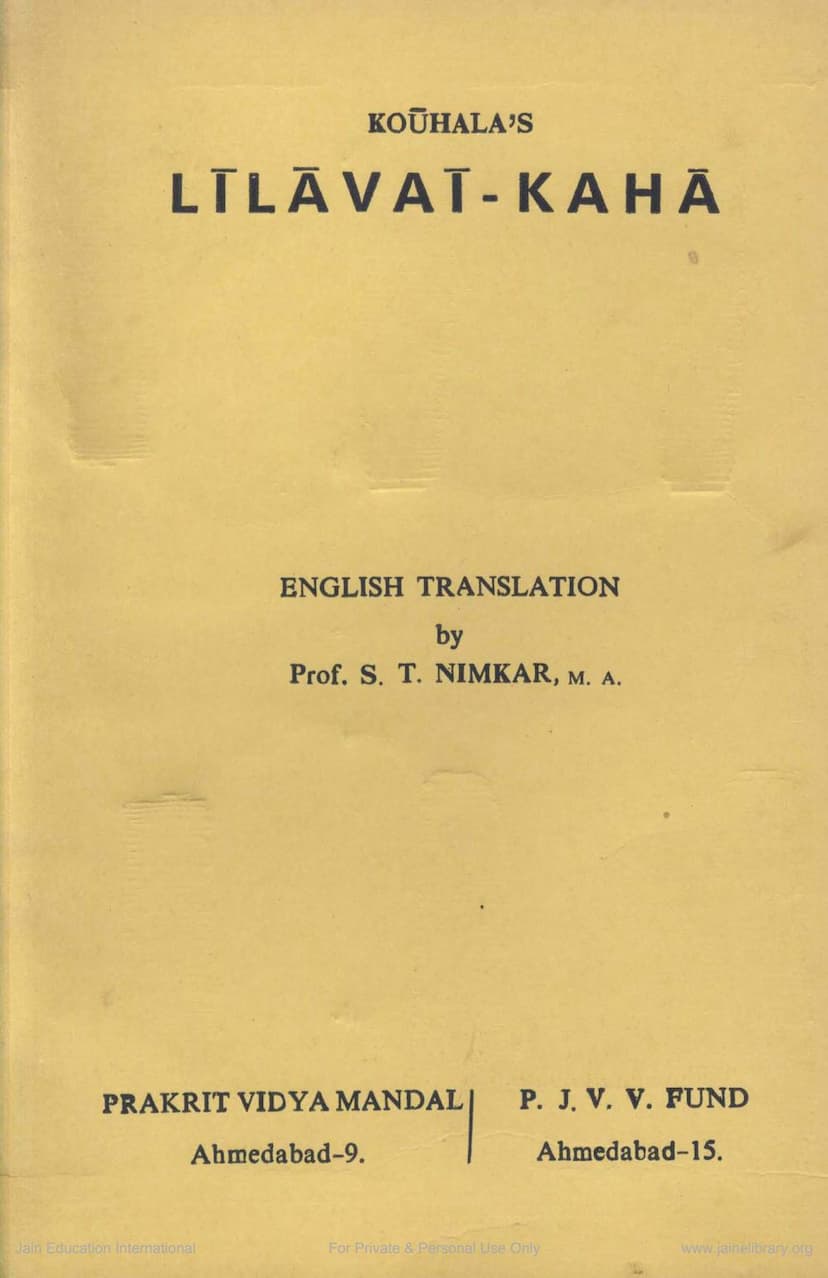Lilavaikaha
Added to library: September 2, 2025
Loading image...

Summary
This document is an English translation of "Lilavati-Kahā" by Kūhala, translated by Prof. S. T. Nimkar. The publication is a joint effort by the Prakrit Vidya Mandal and the P. J. V. V. Fund, Ahmedabad, with financial support from the Shreshthi Kasturbhai Lalbhai Smarak Nidhi.
Key aspects of the document:
- Title: Kouhala's Lilavati-Kahā: English Translation
- Author of Original: Kūhala
- Translator: Prof. S. T. Nimkar, M. A.
- Publishers: Prakrit Vidya Mandal & P. J. V. V. Fund, Ahmedabad.
- Publication Date: First edition, June 1988.
- Acknowledgements: Gratefulness is expressed to Shreshthi Kasturbhai Lalbhai Smarak Nidhi and its trustees for their financial contribution.
- Biography of Kasturbhai Lalbhai: A significant portion of the document (pages 8-14) is dedicated to a detailed biography of Sheth Kasturbhai Lalbhai, highlighting his philanthropic activities, contributions to education and culture, business acumen, and his deep connection with Jainism and its heritage. He is portrayed as a visionary industrialist and a respected figure.
- Publisher's Note: Mentions that the Prakrit text was originally edited by Dr. A. N. Upadhye and published in the Singhi Jain Series. It notes the demand for an English translation for students and scholars and expresses gratitude to those who facilitated its publication.
- Preface by the Translator: Prof. Nimkar explains that he translated the work for his M.A. students and closely followed Dr. Upadhye's critical edition. He acknowledges Dr. H. C. Bhayani and the Prakrit Vidya Mandal for their support.
- Critical Appreciation of Lilavati: This section (pages 16-22) provides an analysis of the literary merit of Kūhala's work. It discusses:
- The "box-within-box" narrative structure.
- The poet's attempts to imitate and excel Sanskrit prose romances.
- Detailed descriptions of nature, characters, and sentiments.
- The characterization of key figures like Sālāhaṇa, Lilāvati, and Mahānumati.
- The use of Mahārāṣṭrī Prakrit and the influence of Sanskrit models.
- The overall quality of the poetry as a gem of Prakrit secular literature.
- The Text of Lilavati-Kahā (English Translation): The bulk of the document (pages 22 onwards) is the English translation of the narrative. It begins with invocations and dedications, followed by the unfolding of the story. The narrative is complex, involving multiple characters, interwoven plots, and extensive descriptions. The translated text includes verses and prose passages, detailing the adventures, dialogues, and emotional experiences of the characters. The story appears to involve themes of love, destiny, royal courts, journeys, and spiritual endeavors.
In essence, the document presents a significant Jain literary work, the "Lilavati-Kahā," in English translation, contextualized by a biography of a key patron and a critical assessment of the literary work itself.